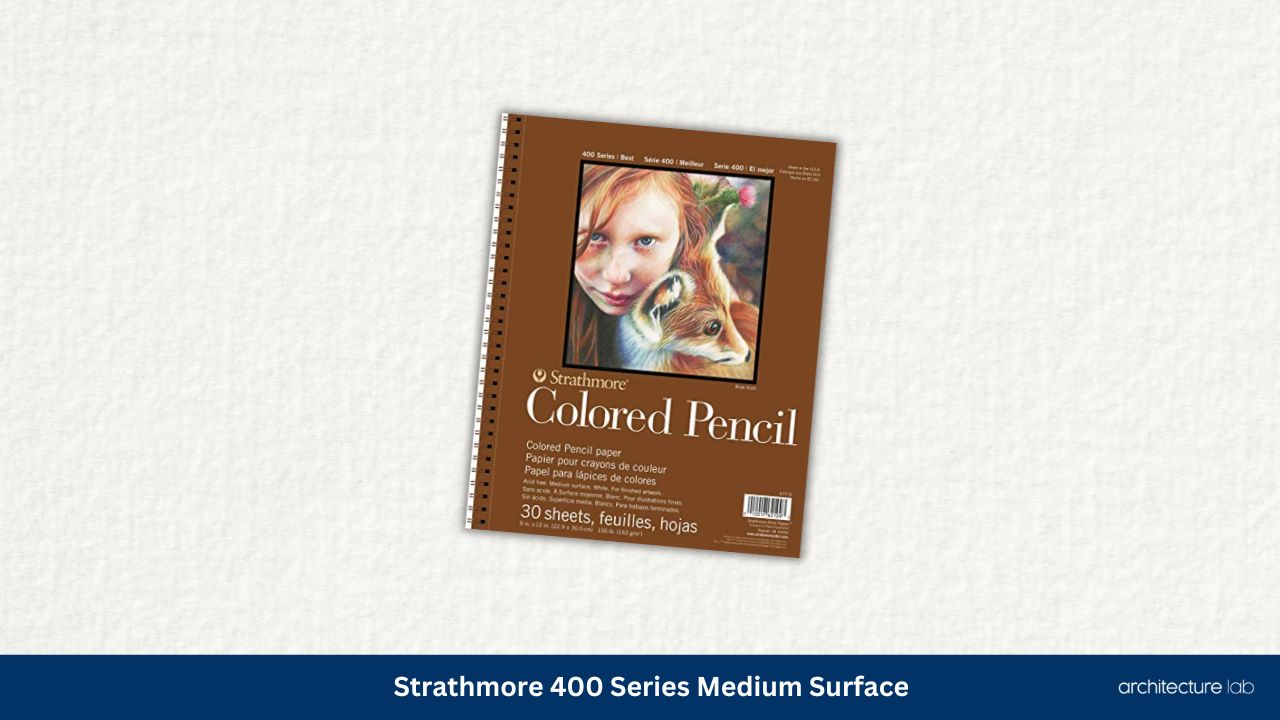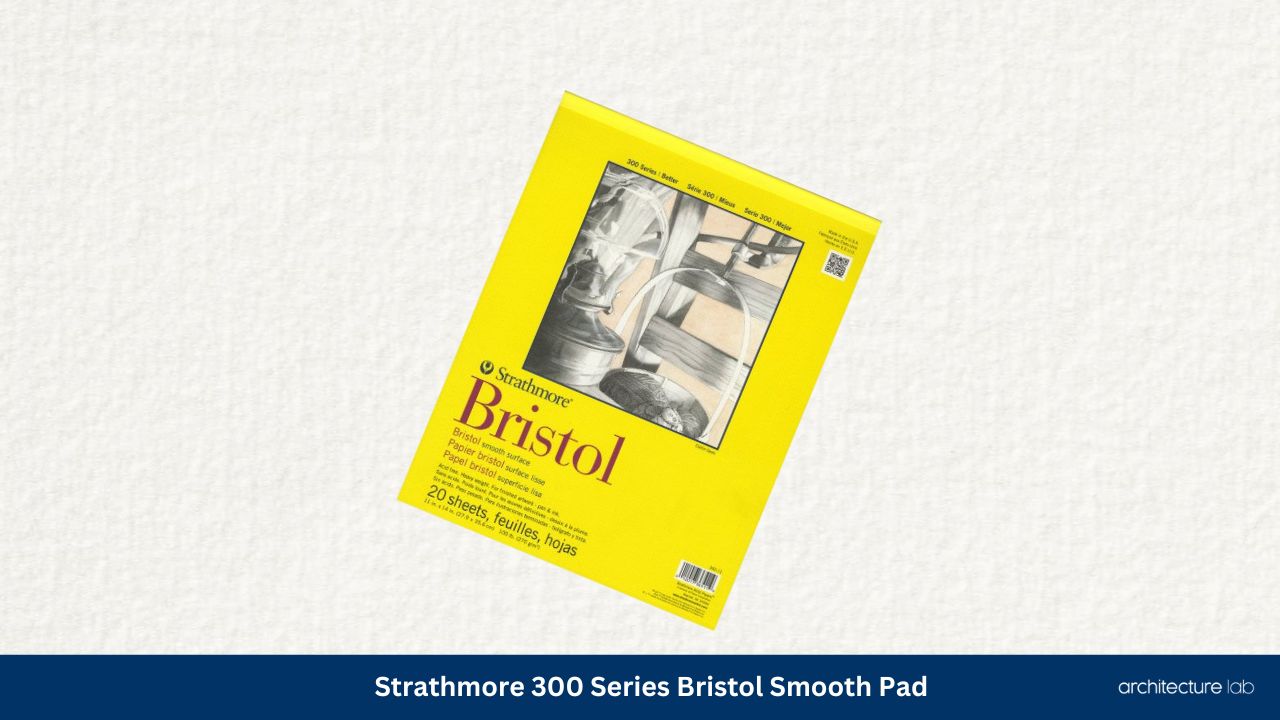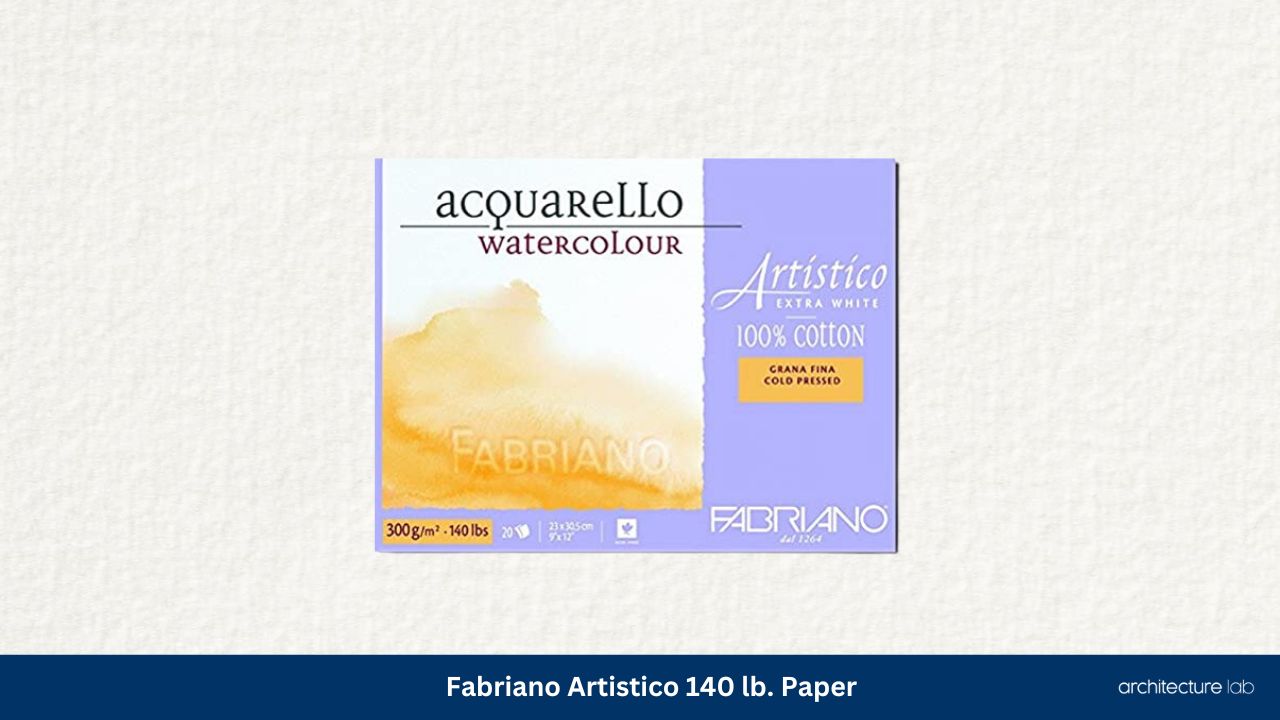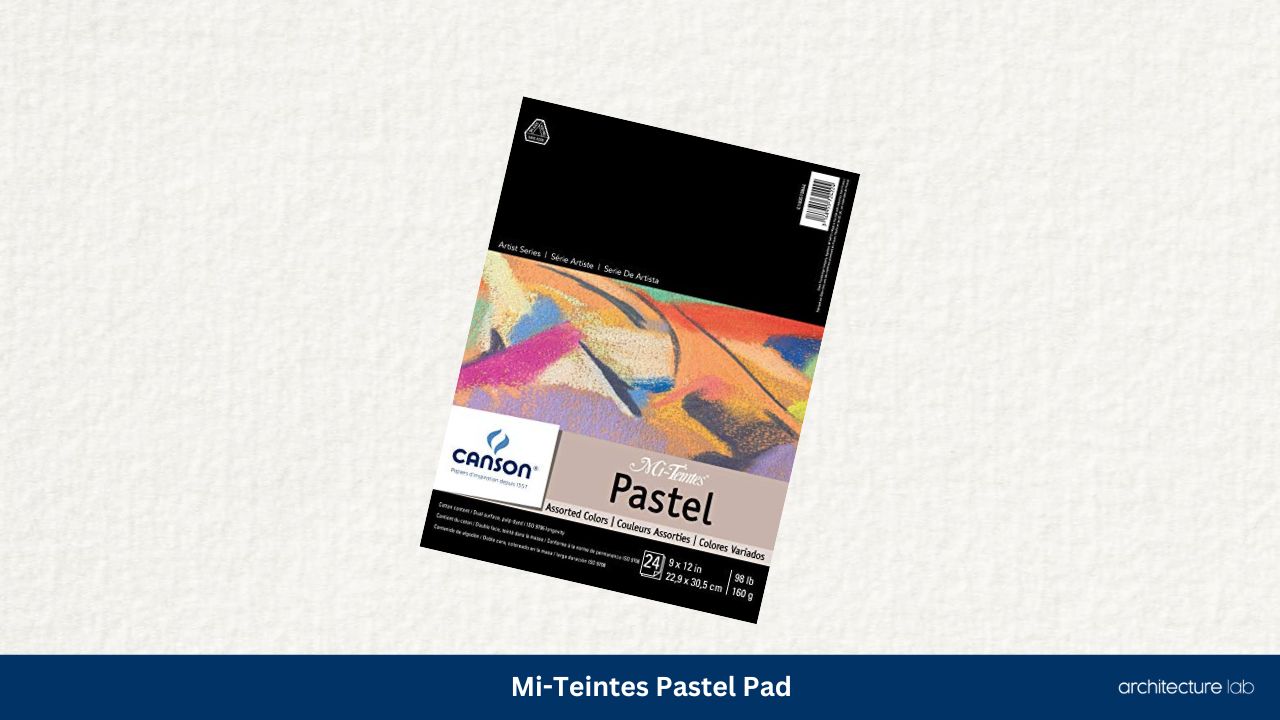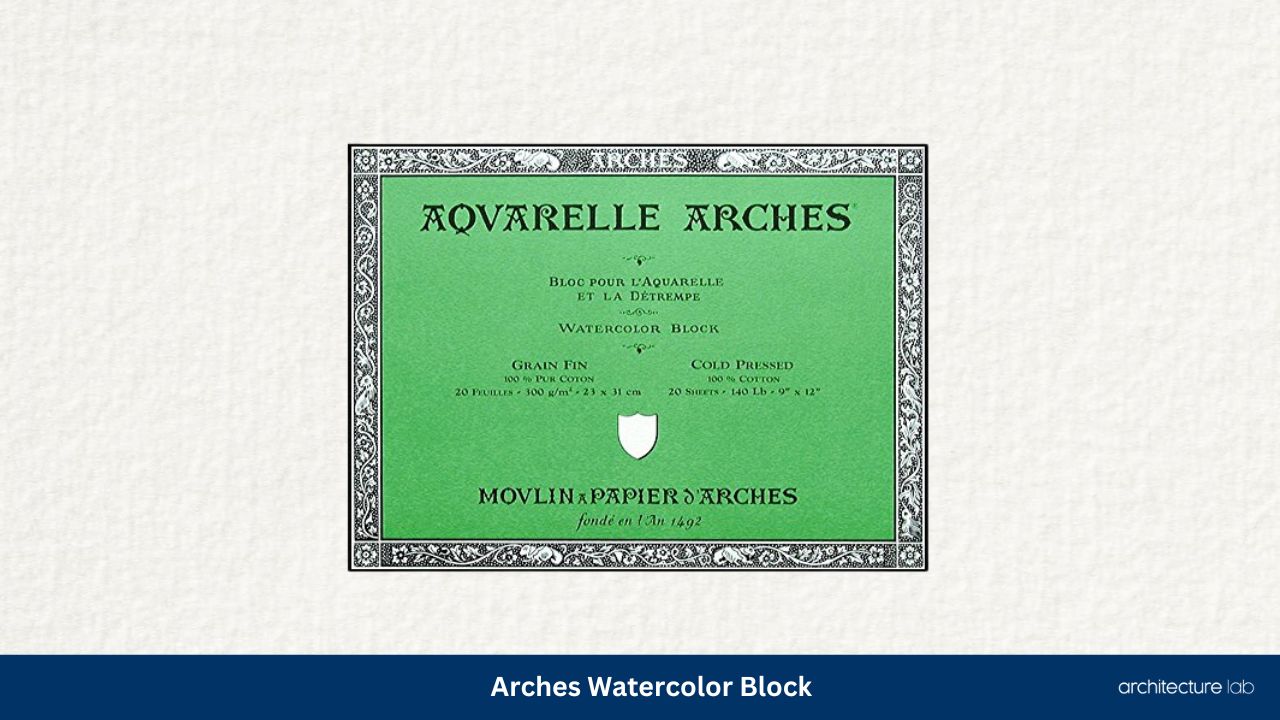Almost all of us have used colored pencils to draw at some point or another in our life – especially, as kids. They are generally perceived as a novice medium to create art.
But that’s not the case with many artists because nowadays many creators use professional-grade color pencils to make beautiful art pieces.
One such professional-grade pencils are Prismacolor Pencils. These pencils have a soft nib that gives a high count of pigments while drawing making them appear almost like a painting.
To get the best results though, you’d need to use specific kinds of paper that can use its full potential.
Hence, in this article, we have listed the 5 best papers that you can use with Prismacolor Pencils and also added a guide to help you in that pursuit.
Best Paper for Prismacolor Pencils
Here’s the list of the 5 best papers for Prismacolor Pencils that will take your artwork to the next level.
1. Strathmore 400 Series Medium Surface– Best Overall
Strathmore is a well-established company in the paper production industry with an experience of 125 years. Strathmore 400 Series Medium surface provides you with off-white papers with medium roughness. It has 24 sheets of 130 gsm paper and the dimension is 12 by 18 inches. The paper is ideal for dry art media.
Experience
If you prefer off-white or cream-colored papers then you’d like the tint of this one as well. Because of the color, we liked sketching on this paper with pencils or charcoal. Something about this shade always makes sketches appear more attractive to us.
We loved this paper for sketching because of the slight roughness of the surface which would pick colors off the nib at just the right amount. With Prismacolor’s soft nib, the saturation of the finished product was, hence, exceptionally good.
The surface feels fine for some other mediums than colored pencils as well, like ink, pen, markers, pastels (oil and soft), charcoal, crayons, etc.
But, we wouldn’t recommend this paper for any wet work like watercolors or poster colors because the paper is, kind of, thin for those media to work fine.
In conclusion, it’s amazing for dry media, especially, for Prismacolor Pencils mainly because of the pencils’ soft nibs and high pigment count, and the rough texture and off-white color of the paper.
What We Like
- Mild rough texture which is great of Prismacolor’s pencils’ soft tips
- Heavy 130 gsm paper which has a nice weight to it
- Has a certain off-white tint which really compliments the colors from the pencils
What We Don’t Like
2. Strathmore 300 Series Bristol Smooth Pad– Best for Mechanical Drawing
Strathmore 300 Series brings a heavier Bristol paper. It’s a whopping 270 gsm paper and the drawing pad has 20 sheets of 9 by 12-inches paper. The quality of the acid-free paper is no less than what is expected from Strathmore. This paper is good for mechanical drawing and can be used with charcoal, ink, pen, markers, and even airbrush.
Experience
It is treated on both sides with one side being a little smoother than the other. So, you have the choice to work with what you prefer.
The pigments lay off really well from the pencil on the paper and it’s not just with Prismacolor pencils.
It works with wet media like Copic markers, watercolor pencils, and even watercolors. The paper is thick enough to handle them but keep in mind that if you lay down Copic markers a little too thick it might bleed from the other side.
A similar problem also happens with watercolor. If you use too much water then the paper might get wrapped and you’d have to flatten it out after the paint has dried.
The paper also comes off easily from the pad, unlike some other products. Combined with this, the smooth finish of the paper makes it usable for finished products rather than just for sketching or practice use.
What We Like
- Very good weight with it – 270 gsm Bristol paper
- Treated on both sides, so, it has both a rough side and a smooth side
- The paper comes off very easily from the drawing pad
- Works very well with charcoal, colored pencils, ink, and pen
What We Don’t Like
3. Fabriano Artistico 140 lb. Paper– Best for Watercolor Techniques
Fabriano Artistico 140 lb. is a great acid-free paper that comes in a convenient size of 9 by 12 inches. The quality of this paper is excellent.
This paper is manufactured from pure cotton giving a nice quality and texture to it. Also, it helps this paper to be extra white and gives it a good heavy weight of 300 gsm.
Experience
The quality of this paper is outstanding. From the texture to the weight, everything feels top-notch. Erasing on this paper is blemish-free, even after doing so several times.
The specific product we are reviewing here is extra white. But you have the choice of going something less bright and traditionally white if you may desire to do so. Both variants have the same weight and quality to it, so the purchase depends only on your preference.
You can also choose what kind of surface you want – rough, hot press, or cold press. Any surface would work fine with Prismacolor but we love the rough one because of how well the pigments stick to the paper.
Because it is so thick, this paper is amazing for working with watercolors – especially, cold press because of the texture – but it’s not foolproof. So, be careful to not use an excess of water, otherwise the paper will warp.
What We Like
- Very heavy paper, rated at 300 gsm
- Has quite a few variants on the basis of color and texture
- Works amazing with almost any media – wet or dry
- It’s made from pure cotton
What We Don’t Like
4. Mi-Teintes Pastel Pad
Mi-Teintes Pastel Pad is globally preferred by almost every artist when it comes to pastels and papercrafts. It’s an affordable but good-quality paper and is made from 50 percent cotton. The pad comes with 24 sheets of 9 by 12 inches, 98 lb. papers that are acid-free.
Experience
The paper has really nice textures to it. The two sides bear different textures – smooth and rough.
The rough one works wonders with pastels and colored pencils. Prismacolor Pencils especially leave a good impression on the rough side.
Because of how course it is the colors of the pencils adhere incredibly well to it – giving the finished product a very attractive look.
For regular pencils and sketching, the smoother side is the one we prefer. It’s mainly because the lines are clean and hatching looks really well on it.
The paper is also lightfast, which makes it possible to use it for finished art pieces.
Mi-Teintes Pastel pad has lightweight papers. It’s thin, so, we don’t recommend using wet art media like watercolor. But with dry media like pencils and charcoal, it works absolutely fantastic.
What We Like
- Very affordable, great for practicing and paper crafts
- Has both smooth and rough textures – which makes it very versatile
- Paper is also light-fast making it usable for an end product
What We Don’t Like
5. Arches Watercolor Block
Arches Watercolor block provides 20 sheets of paper of impeccable quality. It’s made from 100 percent cotton and is bound on all sides. The paper is thick, reliable, and very consistent in its performance making it good for finished use. It’s also highly erasable and works really well with graphite making it’s also excellent for practice sketching.
Experience
You get to choose three kinds of surface – hot press, cold press, and rough. The good thing is that the difference in the surfaces is subtle, which makes it very consistent.
But if you really care about how your art turns out, keep in mind that rough is great at getting good colors from dry art media like charcoal and colored pencils – especially Prismacolor Pencils – but it’s difficult to get precise lines with it.
Because of that, for minute details we highly recommend going for the hot press variant. The cold press is also good for dry medium and it’s more of a middle-ground between hot press and rough.
The area where this paper really shines is with watercolors. Since the paper is designed for that, the flow and look of watercolor are incredible on these sheets. And the fact that the paper is extremely tough and thick helps with that as well.
What We Like
- It has amazing texture and color pick-up – no matter the variant
- Each variant – hot press, cold press and rough – is extremely consistent in performance
- The paper is tough and highly erasable with no flaw
- It’s also incredibly thick and excellent for watercolors
What We Don’t Like
Best Paper for Prismacolor Pencil Comparison Table
| Product | Color | Material | Paper Finish | Sheet Count | Paint Type | Sheet Size |
|---|---|---|---|---|---|---|
| Strathmore 400 Series Medium Surface | White | Paper | Smooth | 30 | Watercolor, Acrylic, Gouache, Ink | 9 x 12 inches |
| Strathmore 300 Series Bristol Smooth Pad | Smooth | Paper | Smooth | 20 | Watercolor | 11 x 14 inches |
| Fabriano Artistico 140 lb. Paper | Extra White | Cotton | Watercolor | 20 | Watercolor | 9 x 12 inches |
| Mi-Teintes Pastel Pad | White | Paper | Watercolor | 24 | Oil, Watercolor, Gouache, Acrylic | 9 x 12 inches |
| Arches Watercolor Block | White | 100% Cotton | Watercolor | 20 | Acrylic, Gouache, Watercolor | 9 x 12 inches |
Buying Guide For The Best Paper for Prismacolor Pencil
Even with the right paper and everything, it can be an ordeal to use Prismacolor Pencils to their maximum potential. Prismacolor is especially great at creating attractive blends and glazes.
So, in these methods, we have talked about how to blend perfectly and conveniently while using your Prismacolor Pencils.
Not only should these tips and tricks help you get the best results but they should also help you get the desired result every time.
So, go ahead and give it a read!
Blender Pencils
Blender pencils, sometimes also referred to as colorless blenders, look almost like regular pencils.
The only difference is that these pencils don’t leave any color behind on the paper. Their sole purpose is to spread the pigments on the paper conveniently.
When you need to blend a specific shade, just gently rub the blender’s tip in the direction you want the color to blend. Do it until you have reached the desired amount of blend.
Using blender pencils is especially helpful when you try to blend two different colors together toward a central convergence.
Or when you want the blend to happen very specifically Because it gives you a great amount of control over your blend.
Layering
Doing light and shade in a painting is a very important task. To get the desired result every time, you might wanna do layering.
When the base color is applied and finished, apply a lighter or a darker shade – depending upon what is your goal – on top of it. Then blend the colors slightly and gently to achieve the desired effect.
Make sure to only add a slight amount of color on the secondary layer at once and not overdo it. Do it with a small amount of color at first and then try to add more color if necessary.
This is because once you have put the second layer of color it’s almost impossible to undo it without messing up your primary layer as well.
Bristle Brush
Although we talked about blender pencils as a great way to control your blend, a bristle brush might do the job even better if you’re careful.
Since brushes are softer and give a more natural blend generally in any art medium, if you know how to control a brush, you can achieve a more even blend with a brush.
The important thing to keep in mind is the type of paper you are using.
With thin paper, use a soft bristle brush to not have any impression or dent on your paper. While with thick paper, use a harder bristle brush to get the best results.
Keeping your pencils right
Prismacolor pencils have extremely soft cores to give the best color adhesion to paper and make perfect blends.
So, make sure that you take good care of them as well. Have a proper housing packet or box for these pencils where the tips have no way of incurring any damage while moving.
Be sure to never drop them and handle them with utmost care while drawing. Also, while using them, don’t put too much pressure, or else the core might get cracked.
Can I use watercolor paper for Prismacolor pencils?
Yes, watercolor paper can be used for Prismacolor pencils, especially if it has a rough or cold press surface. This texture helps the pigments adhere well to the paper, enhancing the appearance of the artwork.
Are Prismacolor pencils suitable for both wet and dry surfaces?
Prismacolor pencils are best suited for dry surfaces. While you can use them on some heavy-weight papers designed for wet media, they perform optimally on paper specifically crafted for dry media.
How important is paper weight when using Prismacolor pencils?
Paper weight is important as it affects the stability and durability of the artwork. A good weight allows for pigment layering and minimizes the risk of tearing or damaging the paper when applying more pressure. Heavy-weight paper is also better equipped to handle varying art media without warping or bleeding.
Should I choose white or off-white paper for my Prismacolor artwork?
This is a matter of personal preference. Choosing off-white or cream-colored paper can give the artwork a warm and attractive appearance, while pure white paper can make the colors stand out more vibrantly.
Are there specific papers that work best with other media along with Prismacolor pencils?
Yes, some papers perform well with various media, including Prismacolor pencils. For example, Strathmore 300 Series Bristol Smooth Pad and Fabriano Artistico 140 lb. The paper works well for charcoal, ink, pen, markers, and watercolors (with limitations).
Conclusion
Thank you so much for taking the time to read our article on the best papers for Prismacolor pencils! We hope you found it informative and engaging. Your passion and dedication to selecting the perfect paper for your artwork are something we truly admire.
Out of the numerous products we have tested, here are the top three expert recommendations.
Strathmore 400 Series Medium Surface is an ideal option for those who appreciate off-white, medium rough papers, which offer excellent results with dry mediums like Prismacolor pencils. Its texture allows great saturation, making your finished artwork exceptionally impressive.
For artists who value heavyweight and high-quality papers, suitable for a wide range of media, both wet and dry, Fabriano Artistico 140 lb. Paper is a good option. With different available textures and colors, it caters to different preferences and offers fantastic versatility.
The Strathmore 300 Series Bristol Smooth Pad is the right choice for those seeking a heavy Bristol paper that can be used with various drawing tools, including charcoal, ink, pen, markers, and airbrush.
Don’t forget that practice makes perfect, and experimenting with different papers will help you hone your skills and develop your unique artistic style.
We wish you the best on this incredible creative journey and look forward to hearing your thoughts on our top recommendations. Keep creating, learning, and growing as an artist.
Happy drawing!
Related Articles

